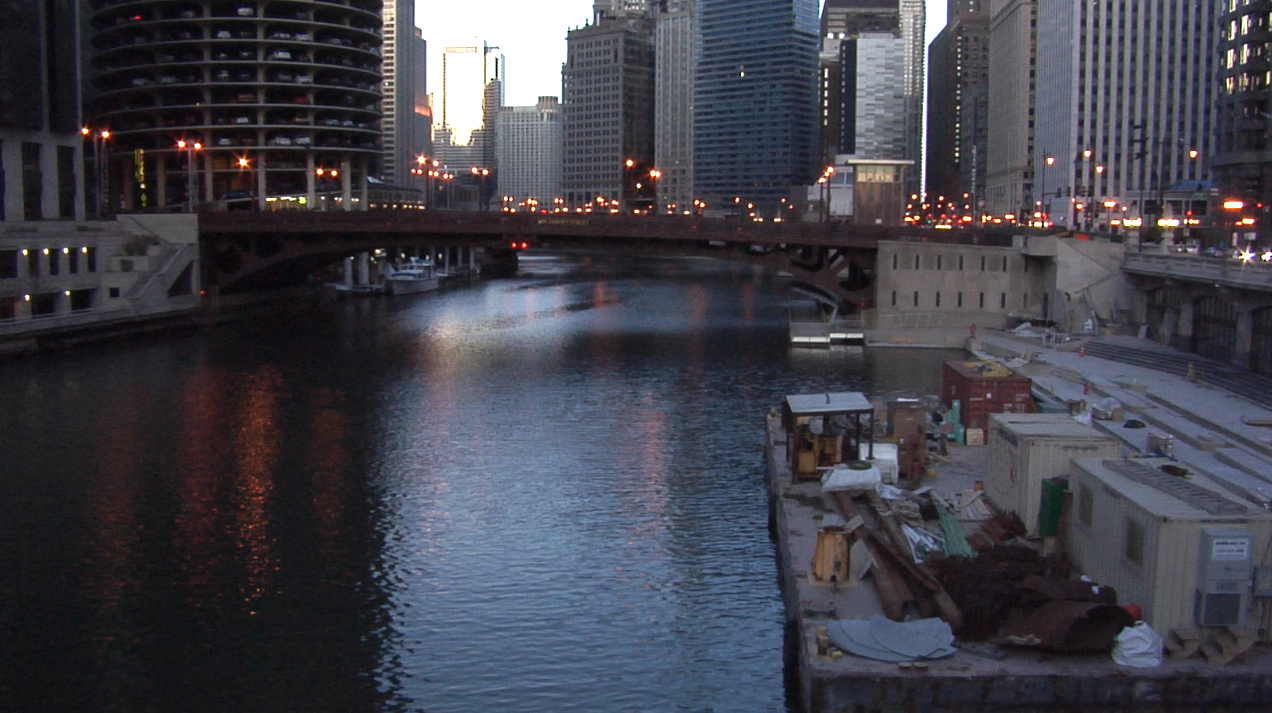By Evan Garcia
It was brown. And it was in the Chicago River. Stunned onlookers saw a growing plume of dark water near the Michigan Avenue Bridge on April 9. After a bit of social media buzz and a brief investigation by the Metropolitan Water Reclamation District, a city spokesman said the discoloration was likely from “rust and dirt” washed out of a storm runoff drain. The city said they would further investigate the overflow’s source. The dirty truth is that the Chicago River is full of sewage.
Despite that unpleasant hue, the city insists it wasn’t sewage that spilled into the river last month. Whether that’s true or not, a mysterious runoff from a stormwater drain raises concern. That’s because after heavy rainfalls like the one on April 9, the MWRD routinely dumps untreated wastewater, a combination of stormwater and raw sewage, into the Chicago River.

(Michael Zajakowski/Chicago Tribune)
“This is so we don’t have flooding on the streets of downtown Chicago or in the CTA tunnels,” said Josh Ellis, program director for the Metropolitan Planning Council, a nonprofit that works with city and state governments on civic projects.
The problem is called combined sewer overflow and it’s the product of Chicago’s outdated sewage infrastructure, which combines sewage and stormwater pipes. When these sewers overflow, they release waste into the Chicago River. One app called Is There Sewage in the Chicago River? has tracked 485 sewage overflow events since 2007.
Wastewater is treated by the MWRD at seven water reclamation plants serving Chicago and 125 municipalities. The Stickney Water Reclamation Plant, located just southwest of Chicago in Cicero, Ill., is the largest wastewater treatment facility in the world. It covers 570 acres and processes 1.5 billion gallons of wastewater a day. However, these plants lack the capacity to treat high waters brought in by severe storms, so the MWRD dumps the untreated wastewater into our waterways, polluting them.

In May 2011, the Natural Resources Defense Council (NRDC) filed suit against the MWRD over this practice. Later that month, the Environmental Protection Agency sent a strongly worded letter to Illinois state government, recommending an upgrade of environmental guidelines for the river. The federal agency pointed to the Clean Water Act, passed in 1972, which requires all waterways to be clean enough for “recreation in and around the water.”
The Chicago River falls under the EPA’s secondary recreational contact designation for a waterway. That means you can sail or kayak on the water, but if you fall in or get splashed by it, you’d better get out and wash off. For a waterway to be suitable for primary recreational contact, like nearby Lake Michigan, it must be safe enough for swimming and immersion. Sewage and pollutants in the Chicago River preclude it from that higher standard.
Kevin Fitzpatrick, a civil engineer for the MRWD, was less than optimistic when asked if the river would ever be swimmable.
“I have no idea,” said Fitzpatrick. “There’s a lot of legacy pollution in the river and there are safety issues in terms of boat traffic. But that is the goal. Hopefully one day we could do whatever we want in it.”

After months of negotiation, the EPA approved stricter water quality standards for Illinois’ waterways in November 2011. Starting this December at the Cicero plant and another facility in Skokie, the MWRD will begin disinfecting the effluent it releases into the river with chlorine and ultraviolet irradiation. For environmental watchdog groups like the NRDC, this advancement is long overdue. Chicago is the last major city to adopt wastewater disinfection.

“The fact that we’re just now talking about disinfecting shows how behind the times Chicago is in cleaning up its water,” said Ann Alexander, senior attorney of the NRDC’s Midwest program. “The Chicago River is a wonderful resource and has the potential to be so much more. And yet we are barely entering the 21st Century in terms of the kinds of water quality standards that need to be met.”
While jumping in the river may not be safe, Chicagoans shouldn’t tremble over their next glass of tap water. For over a century, the sewage-laden Chicago River has been directed to flow away from Lake Michigan, the city’s drinking water source.

Lake Michigan, the second largest Great Lake by volume, provides the majority of northeastern Illinois with their drinking water. (Evan Garcia/Medill)In 1900, the city constructed the Chicago Sanitary and Ship Canal, which carries the city’s treated sewage southwest from Chicago River to the Des Plaines River. Lake Michigan’s freshwaters are generally clean; the NRDC grades its water quality as ‘excellent.’
While the Chicago River is far from sterile, its water quality is slowly improving over time. The occasional river otter or beaver can be seen under a downtown bridge and the river’s resilient fish population is slowly rebounding. Perhaps these are ecological harbingers of a healthier waterway to come.
 MEDILL REPORTS
MEDILL REPORTS
ON CAN TV
In Chicago, watch Medill Reports video stories on CAN-TV channel 27

